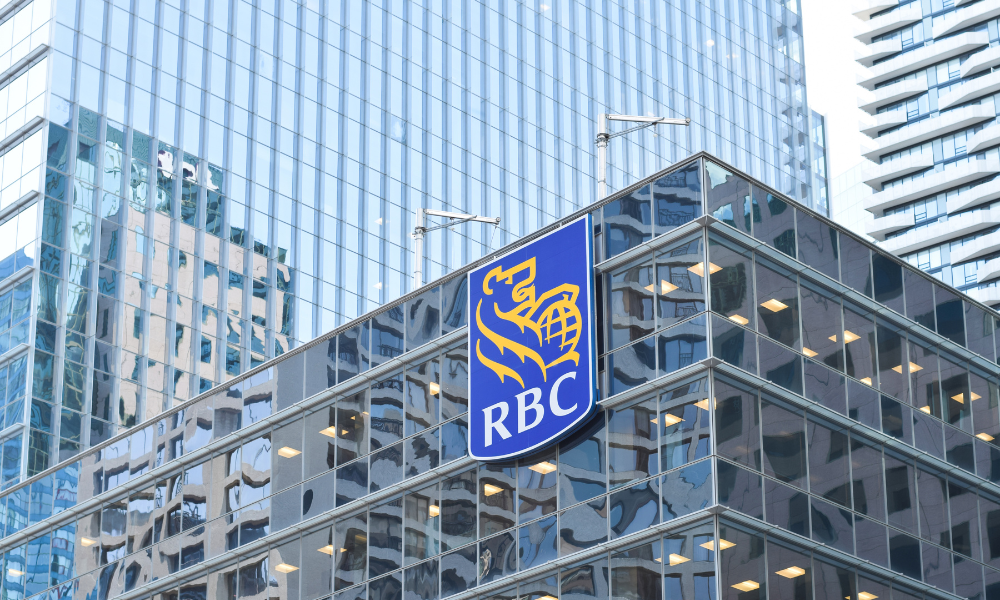Discover how to leverage asset mix strategies to help investors achieve their financial goals. Read this guide to help your clients build stronger portfolios

Asset mix is the distribution of investments across categories. It is one of the most critical parts of portfolio management because it can determine the balance between risk and return. Asset mix can often influence long-term results more than individual security selection.
A carefully chosen asset mix can help protect against volatility while providing opportunities for growth. The right mix will vary for each client depending on their circumstances. In this article, Wealth Professional Canada will discuss what you need to learn about asset mix and other valuable insights.
The three asset classes within an asset mix
An asset mix has three main elements or asset classes:
- equities
- fixed income
- cash
Equities usually provide higher long-term returns but also come with more market volatility. Government bonds, corporate bonds, and other fixed income instruments can offer income and act as a stabilizer relative to equities. However, their performance depends on factors such as duration and credit quality.
Some portfolios also include alternative investments such as:
- real estate
- infrastructure
- commodities
- private equity
These can also offer diversification and the potential for returns that do not move in lockstep with traditional markets. In essence, an investor’s asset mix determines the overall risk level and growth potential of the portfolio. Watch this short clip to better understand what an asset mix refers to:
What is an example of an asset mix?
An asset mix is the combination of various types of investments within a portfolio. A simple example of an asset mix might look like this:
- 60 percent equities
- 30 percent fixed income
- 10 percent cash
This type of mix balances growth potential with some stability. Equities provide the opportunity for long-term appreciation while fixed income helps reduce volatility and generate income. And for liquidity, there’s cash.
The right mix depends on the investor’s goals and comfort with risk. Their timeline is also a defining factor. An asset mix should always reflect the investor’s unique situation rather than being a one-size-fits-all formula.
What is the best asset mix?
There is no single best asset mix that works for all investors. The most suitable mix depends on a number of considerations.
For example, a young investor saving for retirement over 30 years might benefit from an asset mix with a high percentage of equities because equities tend to deliver stronger long-term growth. On the other hand, a more mature client might prefer an asset mix with more fixed income to provide stability and income.
An asset mix that balances the need for growth with the need for protection might be the most practical. It also adapts to changing circumstances. For instance, your clients might start with a more aggressive mix and gradually shift to a more conservative mix as retirement approaches.
Ultimately, the best asset mix is one that the investor can stick with over the long term while staying aligned with their objectives.
What is a balanced asset mix?
A balanced asset mix is a portfolio structure that combines growth and income in relatively equal proportions. The most common version is a 60 percent allocation to equities and a 40 percent allocation to fixed income. This mix is considered balanced because it offers exposure to the higher return potential of equities while maintaining an allocation to bonds for stability and income.
The balanced asset mix is often recommended for investors who want a middle ground between aggressive growth and conservative preservation of capital. It is a popular choice for long-term investors who can tolerate some market volatility but also want protection against large losses.
Watch this video to learn more about a balanced asset mix or a balanced fund portfolio:
The role of diversification in asset mix
Diversification is one of the strongest arguments for paying attention to asset mix. By spreading investments across different asset classes, geographic regions, and sectors, financial advisors can reduce the impact of poor performance in any single area.
For Canadian investors, home country bias can be a risk. The Canadian stock market is relatively small compared to global markets and is concentrated in a few sectors. To introduce diversification to your clients, try suggesting other options like international equities and alternative asset classes.
Proper diversification within an asset mix does not guarantee profits or protect against losses. However, it can improve the risk-adjusted potential of portfolios over time.
Asset mix strategies for different client profiles
These five risk profiles will have different needs for their asset mixes. Let’s briefly discuss each below:
Very conservative investors
Very conservative investors focus on protecting their money while earning steady income. Their portfolios often hold mostly fixed income instruments such as bonds and only a small portion in equities.
This approach reduces the chances of large losses, making it suitable for those who feel uncomfortable with market swings. The goal of this risk profile is to grow investments slowly and steadily over the medium to long term.
Conservative investors
Conservative investors are willing to accept a little more risk than very conservative ones but still prioritize safety. Their portfolios usually contain a larger asset mix of bonds with some exposure to equities. This helps generate income while allowing for modest growth. It is a good strategy for investors who prefer stability while still wanting their money to work for them over time.
Balanced investors
Balanced investors seek both growth and protection. They are comfortable with some level of risk but want to avoid large losses. A balanced portfolio for this risk profile might include a diversified mix of Canadian and global equities along with fixed income.
This type of strategy suits investors with medium or long-term goals and a moderate tolerance for changes in portfolio value.
Growth investors
Growth investors focus on building wealth over the long term. They accept that markets will rise and fall and are comfortable with bigger fluctuations in their portfolios. Their asset mix leans more toward equities than bonds. The emphasis is on growth rather than income. As such, this approach is best for investors who can stay invested for many years.
Aggressive growth investors
Aggressive growth investors aim for the highest possible returns and accept the highest level of risk. Like growth investors, their portfolios are heavily weighted toward Canadian and global equities with little focus on fixed income.
Large shifts in value are expected, but the potential for long-term growth makes this strategy appealing to those with high risk tolerance and a long investment horizon.
How your clients’ asset mix reflects their risk level
Think of your clients’ investment portfolio as a pie that can be divided into slices. Each slice is a type of investment with its own level of risk and potential reward. The higher the risk, the greater the potential return. The way the portfolio is divided is the asset mix.
Some plans can be designed for growth, with a larger portion in stocks or equities. Others focus on protecting capital by holding more fixed income and cash. The right asset mix depends on how your clients think about risk.
Aside from their financial goals, your clients’ asset mix should match their appetite for risk and how long they plan to invest. Together these factors form their risk profile. Some clients choose the portfolio that best fits their profile. Others prefer target date solutions, where the asset mix is managed automatically with a specific end date in mind.
Evaluating and adjusting asset mix over time
An asset mix is never fixed—it needs regular review and adjustment. Over time, market movements can push a portfolio away from its targets. Rebalancing can help bring it back on track by selling assets that have grown too much and reinvesting in those that have fallen behind.
Beyond markets, life events like retirement, receiving an inheritance, or selling a business can change your clients’ financial needs. In turn, you should adjust the asset mix proactively to reflect these new realities.
The COVID-19 pandemic highlighted this even more. It challenged the long-standing 60/40 asset mix model and reminded investors that flexibility is necessary in uncertain times. It has since rebounded, showing it can still be a viable strategy in recent times.
Here’s a video that explains why asset mix matters:
Some mistakes in managing asset mix
You should be aware of common pitfalls when constructing asset mixes such as:
- Overconcentration in domestic markets: some investors often overweight domestic equities, leading to sector concentration risk
- Chasing performance: shifting asset mix based on recent returns can result in buying high and selling low
- Neglecting fixed income quality: reaching for yield without considering credit risk can hurt portfolios during downturns
- Ignoring client behaviour: even a well-designed asset mix fails if your clients cannot stick with it during volatile periods
Reviewing your clients’ asset mix: Sample scenarios
Your clients’ asset mix should not stay the same forever. As their goals and circumstances change, their portfolio needs to change with them. Here are some examples of scenarios when reviewing a client’s asset mix makes sense:
-
Client A has just started her career and is focused on growth. With decades before retirement, she chooses a higher proportion of equities and accepts more risk in exchange for the chance of long-term growth.
-
Client B is saving for a home while raising a young family. He adjusts his portfolio to include more cash and fixed income so that he has stability and liquidity for upcoming expenses.
-
Client C is halfway through her career and thinking about retirement in 15 years. She balances her portfolio between equities for growth and fixed income for stability, aiming to build wealth while protecting against market swings.
-
Client D has recently retired. He shifts his portfolio toward fixed income and cash equivalents, while keeping a small portion in equities to help guard against inflation. His focus is on maintaining steady income and preserving capital.
Using asset mix for your clients’ portfolios
Asset mix can provide you with the needed structure to align investment strategies with your clients’ goals. It acts as the foundation of portfolio construction and has a lasting impact on long-term outcomes. A disciplined approach to asset mix will make certain that each portfolio is diversified and positioned to support financial security.
When you make asset mix a central part of the planning process, you’ll be able to strengthen your role as a trusted guide for your clients’ financial well-being. Review your clients’ asset mix regularly to check whether their objectives remain on track. Finally, be sure that their portfolios also continue to reflect a thoughtful balance between risk and return.
To read more about asset mix and other related topics, check out our Practice Management page.



